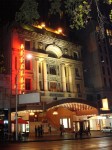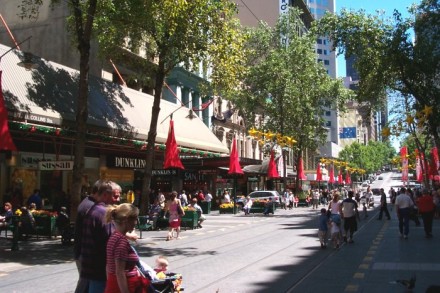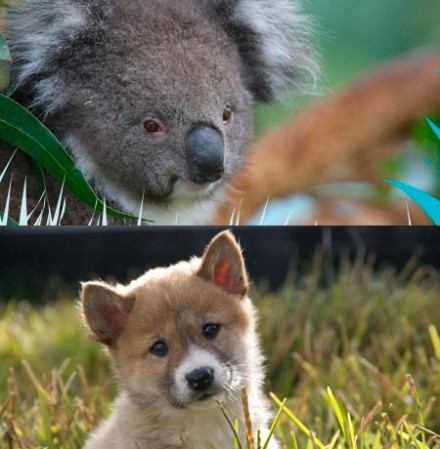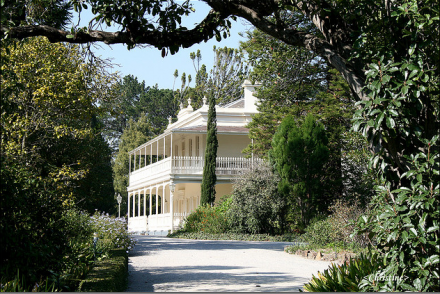Fakta Sejarah Dan Analisa Kepentingan Di Balik Kisruh Hubungan Indonesia-Malaysia
Hubungan Indonesiadengan Malaysia akhir-akhir ini tampak semakin memanas. Intervensiwilayah sekitar perbatasan laut oleh Angkatan Laut Diraja Malaysia,kekalahan Indonesia atas kepemilikan pulau Sipadan dan Ligitan diMahkamah Internasional, penganiayaan sejumlah TKI oleh beberapa oknumwarga Malaysia, klaim obyek seni dan budaya Indonesia oleh pihakMalaysia dalam rangka promosi wisata kunjungan ke sana, dan yangterakhir adalah pelecehan lagu kebangsaan Indonesia Raya oleh pihakyang tidak dikenal, adalah sederetan fakta-fakta yang menunjukkan adaupaya terencana dan sistematis untuk memperburuk hubungan kedua negara.
Konfrontasi dengan "Ganyang Malaysia"
Sejarahmencatat hubungan buruk tersebut bermula dari semangat antikolonialisme dan imperialisme Presiden RI pertama Ir. Soekarno yangbegitu bergelora, ditunjang dengan rasa nasionalisnya yang tinggi,membuat Bung Karno begitu marah ketika mengetahui Malaysia berencanamembentuk federasi Malaysia – dengan menarik Sabah, Serawak, Brunei danSingapura ke dalam persemakmuran Inggris Raya (Commont Wealth)bersama-sama dengan Persekutuan Tanah Malaya – setelah sebelumnyadiberi kemerdekaan oleh Inggris tanggal 31 Agustus 1963. Bagi BungKarno hal itu sama dengan memberi peluang kepada imperialis Inggrisuntuk berkuasa di Kalimantan Utara, dan berarti bisa membahayakankemerdekaan Indonesia.
Kemarahan Bung Karno pun semakin memuncakdisebabkan tindakan para demonstran anti Indonesia di Kuala Lumpur padatanggal 18 September 1963 – dua hari setelah pembentukan FederasiMalaysia oleh Inggris tanggal 16 September 1963 – yang merobek-robekgambarnya dan memaksa Perdana Menteri Malaysia pada waktu itu, TengkuAbdul Rahman, untuk menginjak-injak gambar Garuda Pancasila. Rasanasionalisme Bung Karno terusik, maka lahirlah semangat memerangiMalaysia dengan "Ganyang Malaysia"-nya, yang kemudian menjadi sebuahpeperangan, konfrontasi terhadap Malaysia yang berlangsung hingga masaakhir jabatannya.
Reformasi dan Soekarnoisme
Padatanggal 21 Mei 1998 Presiden Soeharto lengser dari kekuasaannya, danmenyerahkannya kembali kepada rakyat dalam hal ini MajelisPermusyawaratan Rakyat (MPR) yang kemudian menunjuk B.J. Habibie, yangwaktu menjabat sebagai Wakil Presiden, sebagai Presiden Ad-interimsampai dilaksanakannya Pemilu tahun 1999. Lengsernya Soeharto menandaiberakhirnya era kekuasaan Orde Baru dan memasuki era Reformasi, yangmerupakan hasil gerakan mahasiswa Indonesia yang dimulai sejak tahunsembilan puluhan.
Perlu diperhatikan bahwa konfrontasi terhadapMalaysia berakhir ketika Jenderal Soeharto berkuasa, dan selanjutnyahubungan baik dengan Malaysia terus dibina oleh persahabatan yang manisantara Soeharto sebagai Presiden RI dengan Mahathir Mohammad sebagaiPerdana Menteri Malaysia pada waktu itu. Tercatat pembentukan ASEAN(South East Asian Nation) atau organisasi bangsa-bangsa di AsiaTenggara diprakarsai oleh kedua pemimpin ini.
Pada tanggal 7 Juni1999 diselenggarakan Pemilihan Umum (Pemilu) ke-8 sepanjang sejarahpolitik kita, dan pertama sepanjang sejarah reformasi. Meskipun Pemilubaru saja diselenggarakan dua tahun sebelumnya, yakni tahun 1997, namununtuk memperoleh pengakuan atau kepercayaan dari publik, termasuk duniainternasional, karena pemerintahan dan lembaga-lembaga lain yangmerupakan produk Pemilu 1997 sudah dianggap tidak dipercaya. Hal inikemudian dilanjutkan dengan penyelenggaraan Sidang Umum MPR untukmemilih presiden dan wakil presiden yang baru, di mana dipilih danditetapkan Abdurrahman Wahid sebagai Presiden ke-4 RI dengan MegawatiSoekarnoputri sebagai Wakil Presiden.
Dalam kampanye politikbeberapa partai politik yang berfaham nasionalis, dimunculkan kembalisemangat Soekarnoisme. Di mana-mana gambar mantan presiden pertama ituditampilkan berikut cerita-cerita heroik dan rasa nasionalisnya yangtinggi, serta semangatnya yang sangat anti penjajahan, kolonialisme danimperialisme, termasuk cerita tentang konfrontasi Indonesia terhadapMalaysia. Melihat hal itu beberapa pihak mengkhawatirkan terbukanyaluka lama di kedua belah pihak mengenai hubungan buruk di masa lalu.
Kasus tapal batas teritorial negara
Kasuspulau Ambalat sebetulnya merupakan kasus lama yang berawal pada tahun1967 ketika pertama kali diadakan pertemuan teknis hukum laut antaraIndonesia dan Malaysia di mana kedua belah pihak akhirnya membentukkesepakatan (kecuali Sipadan dan Ligitan diberlakukan sebagai keadaanstatus quo).
Pada tanggal 27 Oktober 1969 dilakukan penandatanganan perjanjian antara Indonesia dan Malaysia yang disebut sebagai Perjanjian Tapal Batas Kontinental Indonesia - Malaysia,di mana kedua negara masing-masing melakukan ratifikasi pada 7 November1969. Namun tidak lama berselang, masih pada tahun 1969, Malaysiamembuat peta baru yang memasukan pulau Sipadan, Ligitan dan Batu Puteh(Pedra blanca) ke dalam wilayahnya, tentunya hal ini membingungkanIndonesia dan Singapura, dan pada akhirnya Indonesia maupun Singapuratidak mengakui peta baru Malaysia tersebut.
Kemudian pada tanggal 17 Maret 1970 kembali ditandatangani Persetujuan Tapal batas Laut Indonesia dan Malaysia,akan tetapi kembali pada tahun 1979 pihak Malaysia kembali membuat petabaru mengenai tapal batas kontinental dan maritim dengan serta mertasecara sepihak membuat perbatasan maritimnya sendiri dengan memasukanblok maritim Ambalatke dalam wilayahnya yaitu dengan memajukan koordinat 4° 10' arah utaramelewati pulau Sebatik. Tentu peta ini pun sama nasibnya denganterbitan Malaysia pada tahun 1969, yakni diprotes dan tidak diakui olehpihak Indonesia.
Dengan berkali-kali pihak Malaysia membuat peta sendiri padahal setelah adanya Perjanjian Tapal Batas Kontinental Indonesia - Malaysia tahun 1969 dan Persetujuan Tapal batas Laut Indonesia dan Malaysia tahun 1970, bagi masyarakat Indonesia melihatnya sebagai bentuk ekspansi dari pihak Malaysia terhadap wilayah Indonesia.
TindakanMalaysia tidak hanya sampai di situ, tetapi berlanjut dengan aksi-aksisepihak seperti menangkap dan mengusir nelayan Indonesia dari wilayahAmbalat, dan pemerintah Malaysia ikut-ikutan memberikan hak menambangkepada perusahaan asing di Ambalat. Masalah tapal batas wilayah disekitar pulau Sipadan, Ligitan, Batu Puteh dan Ambalat ini berujungkepada ketegangan-ketegangan yang terus terjadi antara angkatan lautkedua negara di daerah perbatasan laut tersebut.
Sebagaipuncaknya adalah keputusan Mahkamah Internasional di Den Haag, Belanda,dalam sidangnya pada tanggal 17 Desember 2002 yang memutuskan bahwadalam kasus sengketa Pulau Sipadan dan Pulau Ligitan, Indonesiadinyatakan kalah dari Malaysia, dan Malaysia berhak atas Pulau Sipadandan Pulau Ligitan dengan dasar efektivitas. Dalam beberapa hal,Mahkamah Internasional menerima argumentasi Indonesia bahwa PulauSipadan dan Pulau Ligitan tidak pernah masuk dalam kesultanan Suluseperti yang diklaim Malaysia. Namun, di sisi lain, MahkamahInternasional mengakui klaim-klaim Malaysia bahwa mereka telahmelakukan administrasi serta pengelolaan konservasi alam di kedua pulautersebut. (www.gatra.com)
BlokAmbalat kembali memanas dalam tahun ini ketika beberapa kali kapalperang Diraja Malaysia memasuki wilayah teritorial milik Indonesia,yang berhasil diusir oleh kapal perang Angkatan Laut RI. Tindakanmemanas-manasi dari pihak Malaysia ini, masih ditanggapi dengan kepaladingin oleh Pemerintah Indonesia, sementara masyarakat Indonesiamelihatnya sebagai sebuah kelemahan kita terhadap tindakansewenang-wenang pemerintah Malaysia.
Insiden-insiden lain sebagai pemicu
Istilah"Ganyang Malaysia" kembali mencuat setelah dipicu oleh aksi pemukulanwasit karate asal Indonesia Donald Peter Luther Kolobita, Jumat(24/8/2007) di Kuala lumpur. Sekelompok pengunjuk rasa kemudianmembakar bendera Malaysia di Medan dan Jakarta, Rabu (29/8). Aksi inikemudian meluas ke seluruh Indonesia diiringi desakan agar PemerintahIndonesia memutuskan hubungan diplomatik dengan Malaysia. Kejadian inimengagetkan pemerintah kedua negara, namun permasalahan berhasildiselesaikan, dan keempat polisi diraja Malaysia itu dinyatakan sudahdiskors.
Berita mengenai penganiayaan Tenaga Kerja Indonesia diluar negeri sepertinya sudah menjadi makanan sehari-hari di media-mediakita. TKI yang bermaksud mencari rezeki di negeri orang ini, padaakhirnya hanya pulang dengan penderitaan, diperkosa, dianiaya, danbahkan sampai meninggal dunia.
Kasus penganiayaan TKI di Malaysiatermasuk yang paling sering. Penistaan warga Indonesia di Malaysia,khususnya yang berprofesi sebagai pembantu rumah tangga, seringkaliberakhir tragis seperti penganiayaan hingga cacat bahkan meninggaldunia. Sedangkan rekaman film mengenai pemukulan orang yang diduga TKIdisebuah tempat yang diduga kantor polisi Diraja Malaysia, semakinmemanaskan keadaan. Padahal penyebaran rekaman film ini perlu dicurigaiseperti ada unsur kesengajaan untuk semakin mempertajam kebencian kitakepada Malaysia.
Insiden lainnya adalah klaim obyek seni danbudaya Indonesia oleh pihak-pihak di Malaysia (pemerintah danswasta). Dari klaim lagu Rasa Sayange, seni Batik, musik Gamelan, tariReog Ponorogo, dan lain-lain, termasuk yang terakhir pemuatan seni tariPendet dari Bali dalam iklan promosi pariwisata mereka. Perludiketahui, berdasarkan sebuah informasi dari warga Malaysia sendiri,ternyata mereka tidak begitu jelas mengenai permasalahan klaim-klaimobyek seni dan budaya Indonesia oleh negaranya. Bahkan hubungan antaramereka dengan beberapa mahasiswa Indonesia di Malaysia baik-baik sajadan tidak pernah ada masalah.
Analisa pihak-pihak berkepentingan di balik kisruh hubungan Indonesia-Malaysia
Dalamsetiap sengketa dan pertikaian di dunia ini, baik antar negara maupuninternal sebuah negara, selalu melibatkan kepentingan-kepentinganbanyak pihak, baik asing maupun lokal. Faktor ekonomi dan politikbiasanya menjadi alasan campur tangan pihak-pihak tersebut untuk ikutmemancing di air keruh dan mengambil manfaat apabila persengketaanberubah menjadi pertikaian dan peperangan.
Sekarang, marilah kitamelakukan analisa dengan melihat faktor ekonomi dan politik, sertabeberapa kemungkinan yang akan terjadi apabila pihak-pihak yangberkepentingan ikut melakukan manuver agar maksudnya terealisasi.
Pihak-pihakyang kemungkinan ikut mengambil manfaat apabila Indonesia-Malaysiabenar-benar bertikai dan terjadi peperangan, adalah:
1. Malaysia sendiri.
Malaysiamempunyai kepentingan dengan sumber-sumber minyak, gas bumi dansumber-sumber hayati laut di wilayah laut Indonesia yang sangatkaya. Batas wilayah negara di laut mempunyai kekuatan hukum yang sangatlemah, karena sebagai warisan penjajah batas-batas daerah jajahan dilaut tidak ditetapkan dengan pasti antara Belanda sebagai penjajahIndonesia dengan Inggris sebagai penjajah Malaysia. Akhirnya digunakandata sejarah mengenai batas-batas wilayah kerajaan di masa lalu sebagaidasar, dan ini juga masih bisa diperdebatkan.
Selain itu sejarahmencatat mengenai adanya Gagasan pembentukan "Melayu Raya" ketikaIndonesia-Filipina-Malaysia berencana mendirikan Maphilindo, singkatandari Malaysia-Philipina-Indonesia di Manila pada 1963. Para presidendari ketiga negara tersebut mengumumkan Deklarasi Manila yangmenggabungkan negara mereka ke dalam Maphilindo.
Dalam pidatopenutupan, Presiden Filipina Macapagal mengajak hadirin untuk mengenangkembali mimpi para nasionalis Filipina mulai Jose Rizal, PresidenManuel Quezon, Wenceslao Vinzons, sampai Presiden Elpidio Quirino untukmenyatukan bangsa-bangsa Melayu. Macapagal menyebut Presiden IndonesiaSoekarno dan Perdana Menteri Malaysia Tengku Abdul Rahman sebagai "two of the greatest sons of the Malay race".
Gagasanini berdasarkan peta antropologi bangsa-bangsa di mana Indonesia,Malaya, Temasek (Singapura), Filipina, Thailand, Burma (MYanmar),Vietnam, Kambodia, sampai Madagaskar dan Hawaii dikenal sebagai bangsaserumpun Melayu-Polinesia. Tapi sayang ide ini pudar seketika setelahPresiden RI Soekarno menyatakan perang terhadap Malaysia yang telahmenjadi boneka imperialis Inggris.
Malaysia yang merasa sebagaisatu-satunya negara perhimpunan bangsa Melayu bisa saja berkeinginanuntuk mewujudkan Melayu Raya itu di bawah kepemimpinannya. Meskipunmenurut sejarah kerajaan Melayu pertama adalah kerajaan Malayapura diSumatera – di bawah kekuasaan Majapahit – dengan rajanya Adityawarmantahun 1347. Adityawarman adalah utusan Majapahit untuk menaklukankerajaan Sriwijaya, yang kemudian berhasil memaksa Parameswara, putraRaja Sam Agi untuk melarikan diri ke Semenanjung Malaya dan mendirikankerajaan Malaka (1380-1403). Malaka kemudian jatuh ke tangan Portugistahun 1511.
2. Inggris
Sebagai pemimpin negara persemakmuran (commont wealth)dan bekas penjajah negara-negara anggotanya tersebut, tentu sajaInggris mempunyai kepentingan atas kekayaan negera-negaraanggotanya. Dengan kepentingan ekonomi dan juga politik ataswilayah-wilayah Indonesia, bisa saja Inggris ikut memberikan bantuanmiliter kepada Malaysia dalam konflik ini.
Melihat kondisiperekonomian AS yang anjlok sekarang ini, bisa saja muncul keberanianInggris untuk membuka front perlawanan melalui kaki tangannya,Malaysia, untuk merebut sumber minyak di Indonesia yang sekarangdikuasai perusahaan-perusahaan besar AS. Seperti diketahui AngkatanLaut Inggris adalah pasukan tempur laut terbaik di dunia, sehinggadengan modal ini Inggris cukup berani berhadapan dengan AS di AsiaTenggara.
3. Amerika Serikat (AS)
Kondisi ekonomiAS yang sedang mengalami penurunan berpengaruh terhadap kondisiperusahaan-perusahaan minyaknya yang sekarang sedang beroperasi diIndonesia. AS tentu tidak mau hak eksplorasi minyak di lepas pantaiIndonesia akan jatuh ke tangan Inggris yang berada di belakangMalaysia. Kemungkinan besar AS akan memberikan bantuan militer kepadaIndonesia apabila Malaysia memulai penyerangan dan perang tidak bisadihindari.
Selain itu perseteruan AS dengan Korea Utara mengenaisenjata berhulu ledak nuklir milik Korut semakin memanas, yang mungkinakan memaksa AS untuk menempatkan persenjataannya di wilayah Asia,dalam hal ini yang terdekat dengan Kores Utara adalah AsiaTenggara. Apabila terjadi peperangan antara Indonesia dengan Malaysia,maka AS mempunyai alasan untuk menempatkan kapal perang danpersenjataannya dengan membuat pangkalan militer di Indonesia.
4. Republik Rakyat Cina (RRC)
Sebagianbesar orang-orang keturunan Cina di negara-negara Asia Tenggarabergerak di bidang perdagangan dan ekonomi, sebagian adalah parakonglomerat dan pengusaha kelas dunia. Orang-orang keturunan Cinaumumnya tidak bisa melepaskan diri dari keterkaitan budaya dengan tanahleluhurnya di Cina, termasuk juga dengan pemerintahan yang sedangberkuasa di sana.
Keterikatan yang nyata adalah para pengusahakonglomerat keturunan tersebut menempatkan sebagian besar danainvestasi usahanya di Cina. Mereka juga mempunyai hubungan bisnisdengan banyak pengusaha di tanah leluhur.
Selain keterikatanbudaya dan ekonomi, warga keturunan Cina juga ada yang mempunyaihubungan politik dengan pemerintah Cina yang sosialis komunis. Sejarahmencatat ada Partai Komunis Malaysia di era 60-an yang sebagian besarpenggeraknya adalah warga keturunan.
Ada kemungkinan pergerakankomunisme di Asia Tenggara, termasuk di Indonesia mempunyai keterkaitanyang terencana. Bisa saja para aktivis komunis di Malaysia, Indonesiadan Cina saling berhubungan dan bersama-sama memblow-upisu-isu pertentangan agar situasi semakin memanas, khas gaya komunis,dengan cara mencetuskan masalah, ikut mempublikasikannya, dan terakhirikut berdemonstrasi agar suasana berkesan semakin kisruh.
KepentinganRRC yang terbesar adalah perluasan skop ekonomi dan politik mereka,sehingga negara-negara yang dikuasai komunis akan berkiblat secaraekonomi dan politik ke negara tirai bambu tersebut, atau dengan katalain RRC berniat membentuk RRC yang lebih luas atau Cina Raya.
Menurutsejarah gerakan komunis di Indonesia mudah untuk membonceng padaorganisasi atau orang berfaham nasionalis, seperti PKI yang didukungoleh Bung Karno disebabkan PKI satu-satunya yang mendukung program"Ganyang Malaysia"-nya Soekarno. Maka mungkin saja kelompok komunisberkeinginan untuk mengulang sejarah di masa lalu denganmengatasnamakan nasionalisme mereka bergerak merealisasikancita-citanya, mengkomuniskan Indonesia dan Malaysia.
5. Indonesia
KepentinganIndonesia terutama adalah mempertahankan wilayahnya, harga diri bangsadan aset-aset sumber kekayaan alam berupa minyak bumi lepas pantai,hutan kayu di daerah perbatasan dan sumber daya hayati laut. Sedangkankemungkinan adanya kepentingan politik sangat kecil.
6. Gerakan kelompok Islam radikal
Gerakankelompok Islam radikal yang akhir-akhir ini semakin menjadi sorotansetelah beberapa kali melakukan insiden pengebomam di beberapa negaratermasuk di Indonesia ada kemungkinan ikut mengambil manfaat darikeruhnya situasi hubungan Indonesia dengan Malaysia ini. Cita-citamereka untuk mendirikan Negara Islam Indonesia – untuk gerakan lokalIndonesia – mungkin bisa berkembang menjadi Negara Islam Asia Tenggara,dengan menjalin kerjasama dengan kelompok-kelompok Islam radikal diMalaysia, Moro di Filipina dan Pattani di Thailand.
Mungkinkah perang akan terjadi?
Kemungkinanperang benar-benar terjadi sangat kecil apabila dilihat dari kondisihubungan AS dan Inggris. Kedua negara ini selalu sefaham, baik dibidang politik dan ekonomi, dari era "Perang Dingin" melawan UniSovyet, perang melawan Irak, hingga perlawanan terhadap terorisAl-Qaeda. Kecuali perang dimulai sendiri oleh Malaysia atau Indonesia,atau kesepakatan keduanya tanpa mendengarkan suara AS dan Inggris.
Apabilamendengar berita terakhir mengenai terjadi peningkatan kekuatanangkatan bersenjata oleh militer kedua belah pihak, Indonesia danMalaysia, di daerah perbatasan, maka analisanya adalah kedua negaraberusaha keras mencegah terjadi pertikaian sporadis di pihak sipilkedua negara karena terpancing situasi yang kian memanas. Kalau analisaini benar, kemungkinan perang akan terjadi benar-benar kecil sekali.
Adayang perlu dicermati sehubungan dengan insiden-insiden yang memicukemarahan warga Indonesia terhadap Malaysia akhir-akhir ini, bahwakemungkinan sebagian insiden-insiden itu dilakukan dengan terencanaoleh pihak-pihak yang ingin mengambil keuntungan dari kekisruhanhubungan Indonesia-Malaysia untuk memancing kemarahan rakyat Indonesia.
 Bukan favorit saya, tapi menurut adik saya cukup pantas untuk dikunjungi. Old Melbourne Gaol adalah penjara pertama di Australia. Di tempat ini, Robin Hood Australia Ned Kelly dipenjara dan akhirnya dihukum gantung. Yang tidak saya suka… tempatnya menyeramkan sekali. Sel-selnya yang singup dan lembab… sepertinya hantu-hantu para narapidana dari akhir abad 19 masih berkeliaran disitu.
Bukan favorit saya, tapi menurut adik saya cukup pantas untuk dikunjungi. Old Melbourne Gaol adalah penjara pertama di Australia. Di tempat ini, Robin Hood Australia Ned Kelly dipenjara dan akhirnya dihukum gantung. Yang tidak saya suka… tempatnya menyeramkan sekali. Sel-selnya yang singup dan lembab… sepertinya hantu-hantu para narapidana dari akhir abad 19 masih berkeliaran disitu.
 Melbourne dicanangkan untuk menjadi pusat hiburan teater di belahan bumi bagian selatan. Kurang lebih ekivalennya Broadway di New York dan West-End di London. Oleh karena itu disana sering ada production musical yang ngetop seperti The Phantom of The Opera, Sunset Blvd., dan Beauty and the Beast.
Melbourne dicanangkan untuk menjadi pusat hiburan teater di belahan bumi bagian selatan. Kurang lebih ekivalennya Broadway di New York dan West-End di London. Oleh karena itu disana sering ada production musical yang ngetop seperti The Phantom of The Opera, Sunset Blvd., dan Beauty and the Beast.








